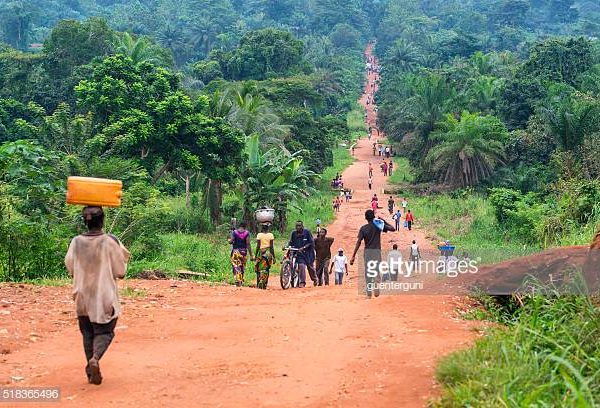DR Congo Demographic Structure
[/cz_title]The traditions and culture of DR Congo reflect the diversity of its hundreds of ethnic groups and their different ways of life throughout the country from the mouth of the River Congo on the coast to the more densely populated mountains in the far east. Since the late 19th century, traditional ways of life have undergone changes brought about by colonialism, the struggle for independence, the stagnation of the Mobutu era, and most recently, the First and Second Congo Wars. Despite these pressures, the customs and cultures of the Congo have retained much of their individuality.
The traditions and culture of DR Congo combine the influence of tradition to the region but also combines influences from abroad which arrived during the era of colonization and has continued to have a strong influence, without destroying the individuality of many tribal’ customs. In this prepackaged guide, read about the people, traditions and culture of DR Congo.

PEOPLE, TRADITIONS AND CULTURE OF DR CONGO
The Congolese culture combines the influence of tradition to the region but also combines influences from abroad which arrived during the era of colonization and has continued to have a strong influence, without destroying the individuality of many tribal’ customs.
[/cz_title][cz_gap height=”32px”]People and Language in DR Congo
[/cz_title]The Democratic Republic of the Congo is a multilingual country where an estimated total of 242 languages is spoken. The official language, inherited from the colonial period, is French and is used by the government and media broadcasts all over Congo. Four indigenous languages have the status of national language: Kituba, Lingala, Swahili, and Tshiluba. Of all the languages in DR Congo, Lingala remains the lingua franca of the region. It is the most popular language for communicating across ethnic lines, and the majority of popular music heard on the radio is sung in Lingala. Since the recent rebellions, a good part of the army in the East also uses Swahili where it is prevalent.
National Festivals & Public Holidays in Congo
[/cz_title]DR Congo features a number of festivals including the worldwide celebrations of Labor Day, New Year’s, and Christmas. However, unlike other countries, Christmas is more religious than being commercial, which means that gifts are not common on that day. Other country-specific festivals include Marty’s Day on January 4 every year. This day remembers the people who died for justice as well as people who died due to human rights abuse. In the same month, on January 17, the country observes National Heroes’ Day to remember national heroes such as Patrice Lumumba. Independence Day is on June 30. Other festivals include National Liberation Day (May 17), Parent’s Day (August 1), Army Day (November 17), and Youth Day (October 14).
Local Cuisine in Congo
[/cz_title]The national dish is rice and moambe chicken. However, the varied cuisine of the country includes both indigenous and exotic foods. One of the staple foods is the cassava, which is typically served with other foods such as stew. Aside from cassava, the little available land for farming is used to grow foods such as maize, sweet potatoes, rice, several varieties of nuts and peas, and other plants. Most of these foods are national dishes although some regions have unique foods. For export, the chief crops are palm oil and coffee. In addition to crops, people practice livestock farming although the civil war in the region has been unkind to these farmers.
Aside from growing food, it is common for people to hunt wild meat as well as gather food from the wild. Wild foods include things like fish, bushmeat, honey, mushrooms, wild fruits, and other things. Other Congolese foods include ugali, moambe, fufu, loso na madesu, ndakala, mbembe, palm wine, and many more.
Traditions and Culture: Congolese Sculpture and Masks
[/cz_title]
Congo, like most African countries, is known for its ancient sculptures and masks which can be seen in museums all over the world. The influence of Congolese sculpture on modern art and the cubism movement has been well documented. Pottery, basketry, textiles like raffia and wood carving are also part of the main handicrafts of Congo. There are at least fifty different styles of sculpture, related to the tribes. They bear the name of the tribe where they were developed and where they were kept. The main ones are Kongo, Teke, Holo, Suku, Pende, Mbala, Ngbandi, Ngbaka, Azande, Mangbetu, Mongo, Mbole, Lengola, Kuba, Luba, Songye, Lega, Bembe, Hemba, Tshokwe. There are many other tribes that produce unique works of equal value. Wood is the most used material, then come ivory, bone, plant fiber, metal: stone. The cowry shells, beads, feathers, animal skins, kaolin and vegetable colors complement and decorate numerous works.
Ethnicity and the People of Congo
[/cz_title]Over 200 ethnic groups populate the Democratic Republic of Congo, of which the majority are Bantu peoples. Together, Mongo, Luba, and Kongo peoples (Bantu) and Mangbetu-Azande peoples constitute around 45% of the population. The Kongo people are the largest ethnic group in the Democratic Republic of Congo.
About 600,000 Pygmies are the aboriginal people of DR Congo. Although several hundred local languages and dialects are spoken, the linguistic variety is bridged both by the widespread use of French and the national intermediary languages Kituba, Tshiluba, Swahili, and Lingala.
Religious Practices in DR Congo
[/cz_title]Christianity is the majority religion in the Democratic Republic of the Congo, followed by more than 90% of the population. Denominations include Roman Catholic 42.8%, Protestant 38% and other Christian denominations (including Kimbanguist) 12%. Minority religions include Muslims (mainly Sunni) who represent 1% of the population and others (including syncretic sects and indigenous beliefs) accounting for 4%, according to most recent estimates. Hinduism which is not widely spread represents 0.16% of the population. Kimbanguism was seen as a threat to the colonial regime and was banned by the Belgians. Kimbanguism, officially “the church of Christ on Earth by the prophet Simon Kimbangu”, now has about three million members, primarily among the Bakongo of Bas-Congo and Kinshasa.
Music, Dance and Drama
[/cz_title]Another feature in DR Congo culture is its music. The country has blended its ethnic musical sources with Cuban rumba, and merengue to give birth to soukous. Other African nations produce music genres derived from Congolese soukous. Some of the artists using this style sing using the Lingala language, which is one of the country’s national languages.
One of the most popular musicians from the DRC is Papa Wemba who is also known as “le sapeur.” Artists like Papa Wemba have set the tone for upcoming musicians from the country who are now following his style of dance and wearing opulent designer clothing. A popular dance style that has been dominant is the “Ndombolo” style, which is represented by African greats such as Fally Ipupa and Koffi Olomide. The newer generation of upcoming artists include the likes of Mike Kalambay and Audit Kabangu.
Commercial Activities in DR Congo
[/cz_title]Sparsely populated in relation to its area, the Democratic Republic of the Congo is home to a vast potential of natural resources and mineral wealth. Despite this, the economy has declined drastically since the mid-1980s. Sectors of commercial activities include Agriculture, Fishing, and Foresty. Agriculture is the major commercial activity of the country supporting the economy with over 57.9% of the GDP in 1997. Main cash crops include coffee, palm oil, rubber, cotton, sugar, tea, and cocoa. Food crops include cassava, plantains, maize, groundnuts, and rice. In 1996, agriculture employed 66% of the workforce.
Powerful players from around the world compete for access to the DRC’s rich natural resources, which include diamonds, cobalt, copper, gold, and oil. In order to pass customs, traders may eat gold pellets or hide illegal goods in the spaces of a car engine in order to successfully make it through a border, where they then sell these items on the black market.
Traditions and Culture in DR Congo: Sports
[/cz_title]Football is the most popular sport played in the Democratic Republic of the Congo. The national football team has won the African Cup of Nations twice: in 1968 and 1974 under the nations’ former name Zaire. The national team has once qualified for the World Cup, namely in 1974 in the former West Germany. In club level, TP Mazembe made history as the first ever African club- and team- to reach a FIFA tournament final, losing to European Champions Internazionale in the 2010 FIFA Club World Cup.
